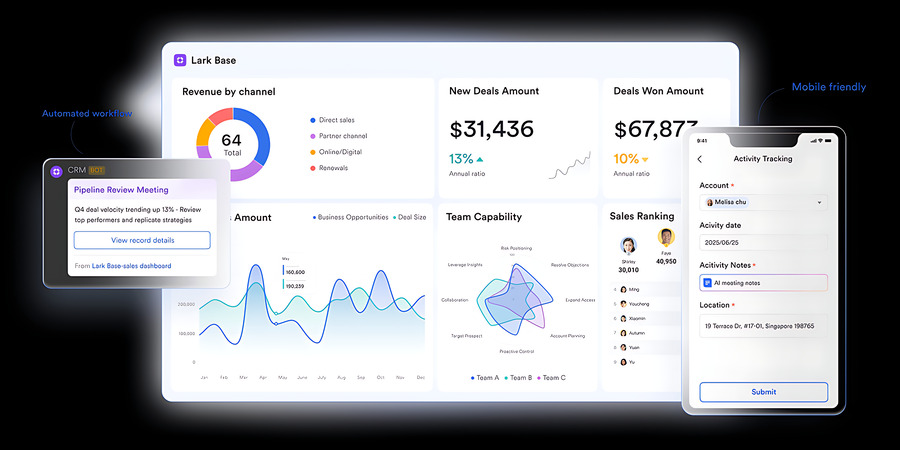Tesla, a company synonymous with innovation, has extended its expertise beyond electric vehicles and into the realm of robotics. Enter Optimus, the humanoid robot designed to reshape industries and possibly even the way we live. Revealed by Elon Musk in 2021, the Tesla Optimus robot aims to be more than just a novelty; it’s designed to be a versatile, human-assisting machine capable of performing everyday tasks and transforming sectors such as manufacturing, logistics, and even home care.
A Humanoid Built for Versatility
The most striking feature of Optimus is its human-like form. Standing approximately 5’8″ tall and weighing about 125 pounds, the robot closely mimics the dimensions of an average adult human, allowing it to interact with environments built for people. Its structure is designed to be agile yet sturdy, equipped with a series of actuators and joints that give it a remarkable range of motion.
Tesla’s engineers have prioritized safety, so while Optimus is strong, it won’t pose a danger to humans. Musk has been clear that the robot is “designed to be friendly” and operate at a pace that humans can comfortably manage. Its maximum walking speed is around 5 mph, ensuring that it can keep up with people but never outpace them in a dangerous way.
This humanoid friend is equipped with sensors and cameras similar to those used in Tesla’s Autopilot system, giving it spatial awareness and the ability to navigate complex environments. With these capabilities, Optimus can perform a range of tasks autonomously or respond to human commands. Whether it’s assembling products in factories, stocking shelves in retail stores, or handling household chores, the robot’s flexibility is its primary strength.
Real-World Applications: Factories and Beyond
Tesla’s Optimus robot is expected to first demonstrate its potential in Tesla’s own manufacturing facilities. One of the company’s goals is to automate repetitive tasks, such as material handling and machine tending, freeing up human workers for more complex, creative, and higher-value roles. By taking over physically taxing or monotonous tasks, Optimus could help reduce workplace injuries and increase productivity.
Beyond industrial settings, Optimus holds the promise of entering everyday environments. Musk has hinted at a future where the robot could become a household assistant, performing mundane chores like folding laundry, preparing meals, or even caring for the elderly. This would make Optimus a game-changer for individuals with mobility challenges or those who need extra help around the house.
The Intelligence Behind Optimus
What sets Optimus apart from other robots is its AI backbone. Powered by Tesla’s advanced neural networks, the robot can learn, adapt, and improve its performance over time. Its onboard computer and sophisticated software allow for decision-making capabilities in real-time, enabling it to respond to dynamic environments and unpredictable human behavior.
Like Tesla’s self-driving cars, Optimus relies on a combination of data collection and machine learning to refine its actions. Over time, as more units are deployed and more data is gathered, Optimus will get smarter and more capable, much like Tesla’s fleet of vehicles.
Limitations and Ethical Considerations
While Tesla’s Optimus is an exciting leap forward in humanoid robotics, it’s not without limitations. As of now, its abilities are still in development, and it’s unclear how soon it will reach its full potential. Challenges in robotics like natural human interaction, emotional intelligence, and nuanced decision-making remain complex hurdles. However, with Tesla’s resources and history of pushing technological boundaries, Optimus has a strong chance of overcoming these obstacles in the years to come.
The ethical implications of introducing humanoid robots into everyday life also spark debate. Critics are concerned about potential job displacement as robots take over tasks traditionally performed by humans. There’s also the question of privacy and security, as such a powerful, AI-driven machine could raise issues regarding data collection and misuse.
A Glimpse into the Future
Musk has a bold vision for Optimus. He believes that the humanoid robot could one day have economic significance on par with Tesla’s electric vehicles. According to Musk, this robot has the potential to address the labor shortages that various industries face and could fundamentally shift human-robot relationships. Optimus could be a companion, a worker, or even a caregiver, opening the door to a future where robots play an integral role in everyday life.
With Tesla Optimus, we are witnessing the dawn of a new age of robotics—one where machines don’t just serve industrial purposes but blend seamlessly into our human-centric world. If Tesla succeeds in bringing Optimus to market with the capabilities it promises, this humanoid “friend” could indeed do anything, ushering in a new era where robots serve as an extension of ourselves in unprecedented ways.
Conclusion
Tesla’s Optimus robot represents more than just a technological innovation—it’s a vision of a future where humans and robots coexist and collaborate harmoniously. Designed with versatility, safety, and intelligence in mind, Optimus has the potential to transform industries and change lives. While there are still challenges to be addressed, the concept of a humanoid robot capable of doing anything isn’t just science fiction anymore—thanks to Tesla, it’s becoming a reality.
















